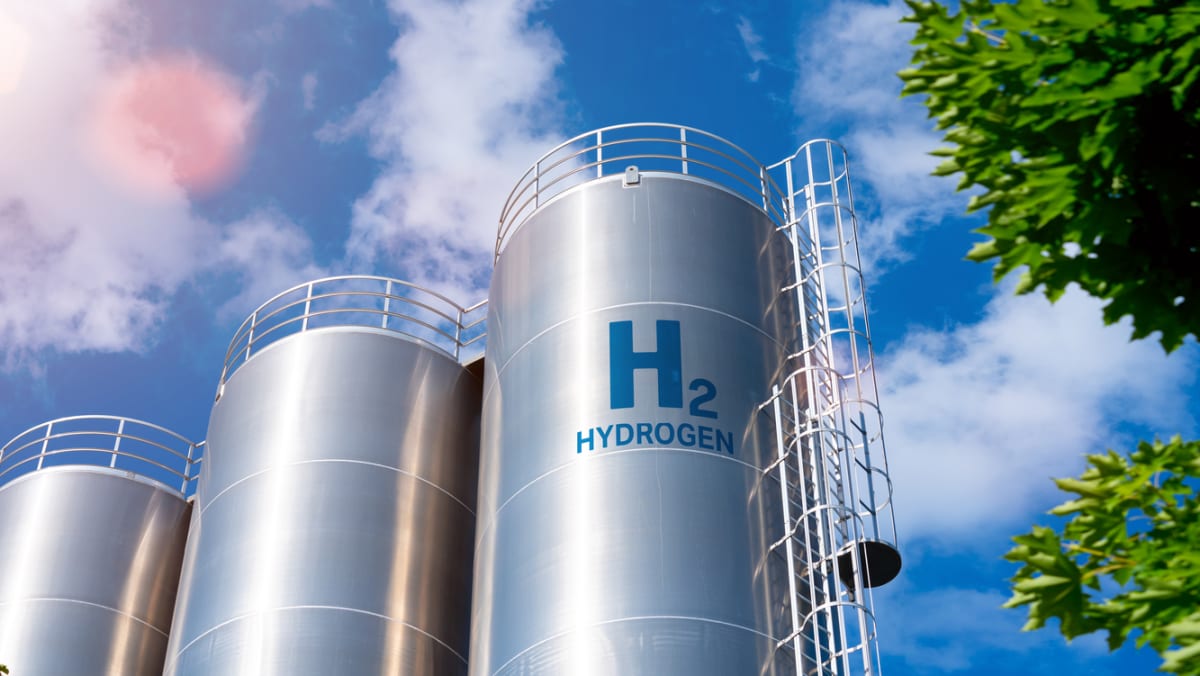
Why does Singapore want to switch to hydrogen?
As a small, resource-constrained country, Singapore has limited renewable energy options to decarbonise its economy.
While the country is aiming to deploy at least 2 gigawatt-peak of solar energy by 2030 – equivalent to powering about 350,000 households for a year – this will only meet a small fraction of its energy demands.
According to statistics by the Energy Market Authority, Singapore’s annual electricity consumption is about 50 terawatt hours (TWh).
At the Singapore International Energy Week on Oct 25, Deputy Prime Minister Lawrence Wong said that even if Singapore were to maximise all its available spaces for solar deployment, it would still not be able to generate enough electricity to keep the lights on.
There are also limits to how much low-carbon electricity Singapore can import from the region.
However, with an exponential increase in global investments and key technologies across the value chain expected to become commercially available in the coming years, low-carbon hydrogen has emerged as a promising solution for Singapore.
According to the Ministry of Trade and Industry, hydrogen could supply up to half of the country’s needs by 2050, depending on technological developments and the development of other energy sources.
Besides providing an alternative for domestic emissions, low-carbon hydrogen and hydrogen-derived fuels can also be used in the maritime and aviation sectors, both of which are carbon-intensive.
It will also complement and diversify the country’s power mix alongside solar, imported electricity, and other potential low-carbon energy sources.
What are the challenges in hydrogen deployment?
Despite the optimism surrounding clean hydrogen, key uncertainties remain.
Producing hydrogen from low-carbon electricity is more expensive than producing it from fossil fuels.
According to a report from the International Energy Agency (IEA), green hydrogen costs more than US$7 per kilogram at the higher end. In comparison, hydrogen produced from natural gas and coal cost below US$3 in 2019.
Extensive infrastructure will be required to support a hydrogen economy. During his speech at the Singapore International Energy Week, Mr Wong said Singapore is likely to need new storage and distribution infrastructure as it has different properties from natural gas.
A study commissioned by the National Climate Change Secretariat, Singapore Economic Development Board and Energy Market Authority estimated that the capital expenditure of constructing a new hydrogen pipeline infrastructure in Singapore could be US$364 million.
This would be a large project implemented in phases over several years, the report said.
To overcome these challenges, Singapore is setting aside an additional S$129 million to support hydrogen research and development. A significant amount of this will be directed towards projects that can help the country import, handle and utilise hydrogen and its carriers safely and at scale.
It will also study the land and infrastructure requirements needed to deploy low-carbon hydrogen in the longer term.
